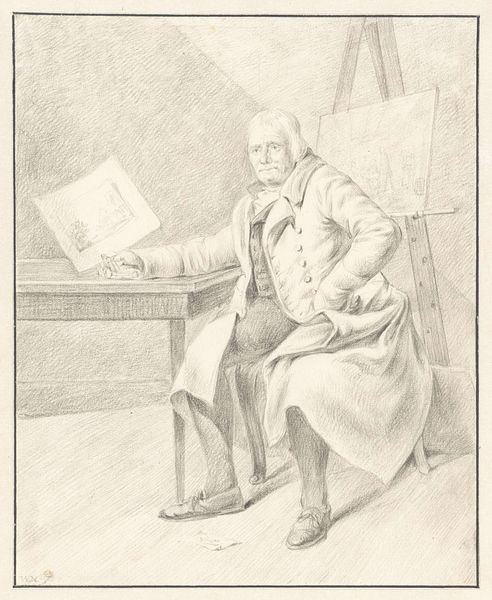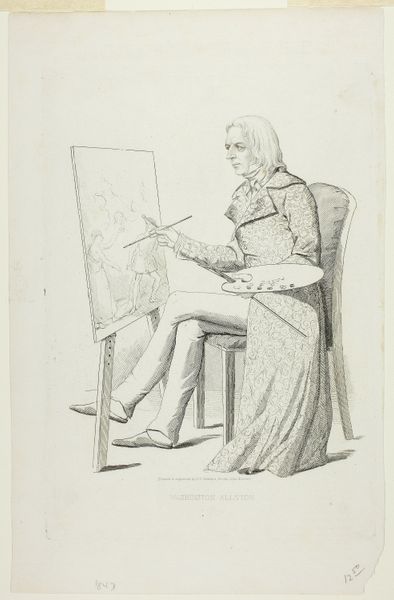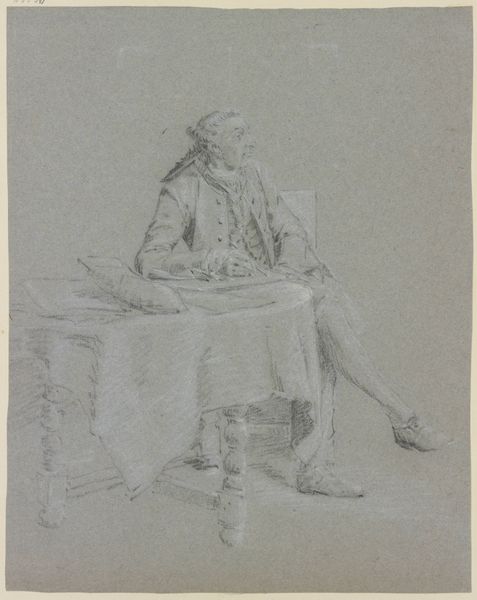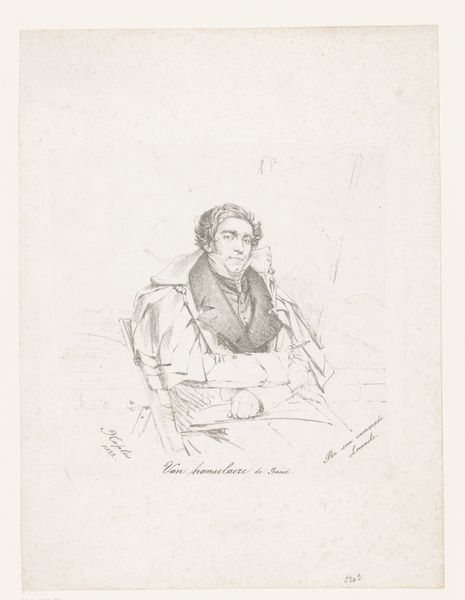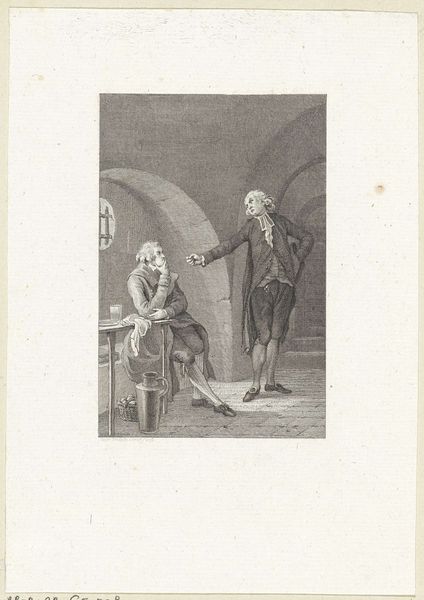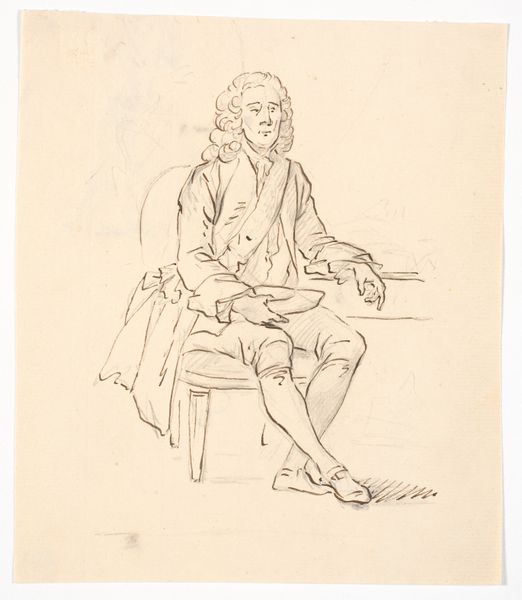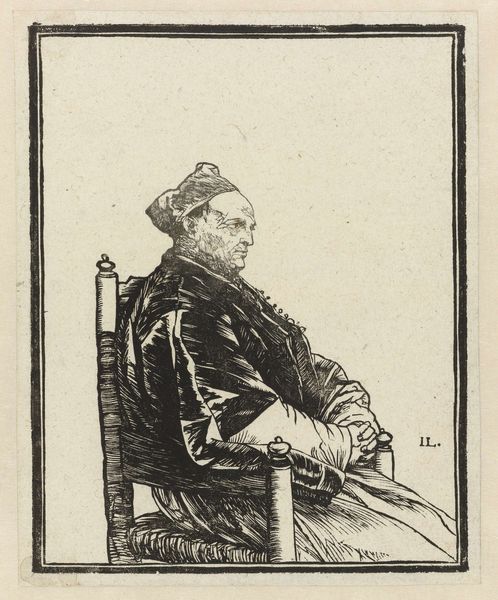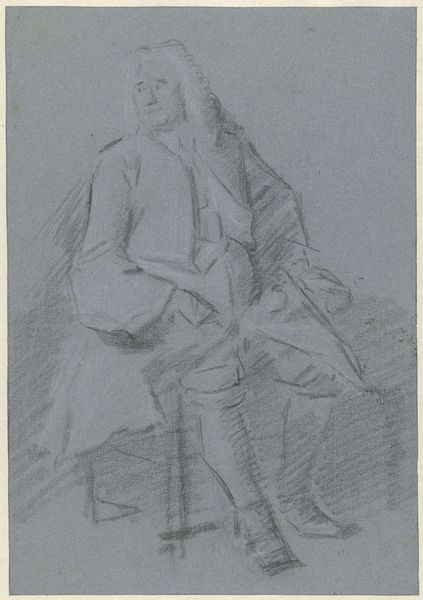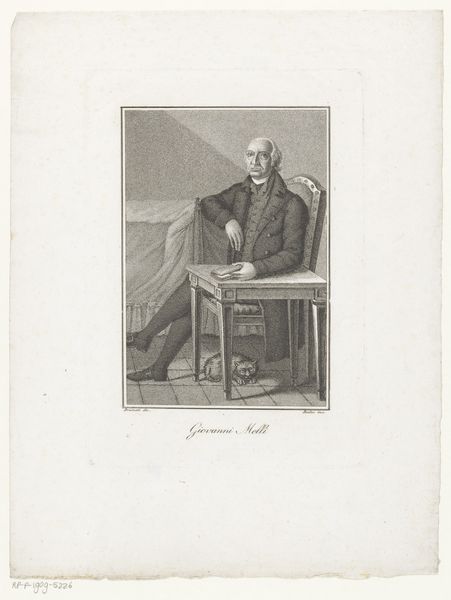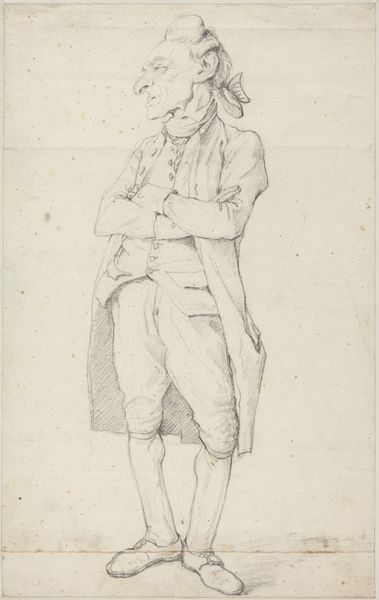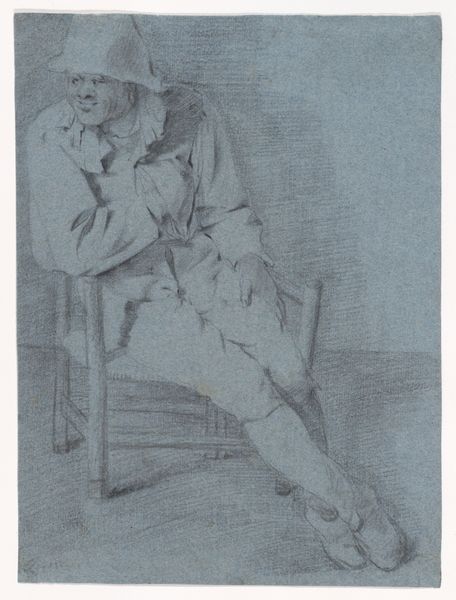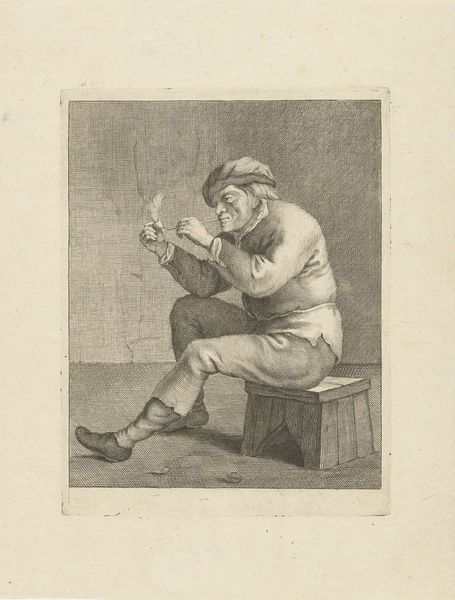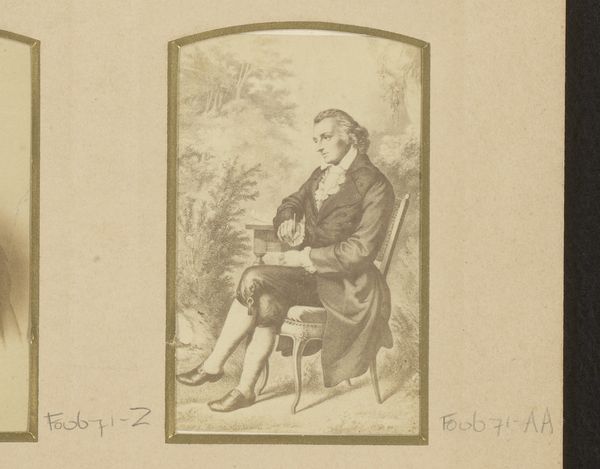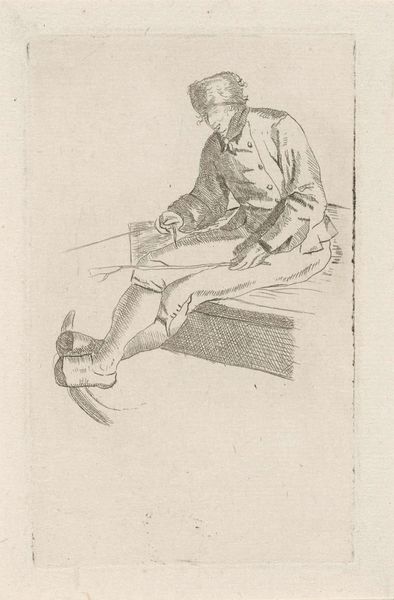
drawing, ink, pencil
#
portrait
#
drawing
#
neoclacissism
#
light pencil work
#
quirky sketch
#
pencil sketch
#
old engraving style
#
figuration
#
personal sketchbook
#
ink
#
idea generation sketch
#
pen-ink sketch
#
pencil
#
sketchbook drawing
#
pencil work
#
academic-art
#
sketchbook art
Dimensions: height 128 mm, width 107 mm
Copyright: Rijks Museum: Open Domain
Curator: Before us we have a pencil and ink drawing titled "Tekenaar," created around 1815 by Johannes van Cuylenburgh. It is a study of a figure at a desk. What’s your initial impression? Editor: I'm immediately struck by the sketch's delicate nature, the man hunched intently over his work; it evokes a sense of quiet contemplation and a somewhat isolated scholarly life. There’s almost an antiquated academic atmosphere here, heightened by the use of ink and pencil. Curator: Absolutely. It’s an interesting depiction reflecting the Neoclassical artistic tendencies of that era. Consider how images like this functioned within the artistic circles of the time— perhaps a glimpse into an artist's creative practice within the broader societal changes impacting the art world? Editor: Indeed. And consider the potential symbolism of the act of drawing itself. In many cultures, writing or drawing figures symbolize intellectual power, authority, and even prophecy. What stories are these lines on paper trying to tell? There is almost a mystical quality to the image of the solitary scholar. Curator: The social role of the artist becomes intertwined with the symbols and the messages they choose to create. Did this artwork appear in an official exhibition? How was this image meant to circulate and impact viewers? These are very critical points. Editor: Right! Is he a portrait of a specific writer or artist? Or could it be interpreted as an archetypal image, embodying the creative process itself, almost akin to a muse figure found in older traditions? Curator: Regardless, "Tekenaar" provides a remarkable insight into the artistic practice and the prevailing cultural ideals of the 19th century. Its Neoclassical style reflects broader social shifts of the time. Editor: I concur. It leaves one pondering the layered symbolic weight an artist brings to an image. It reflects continuity, spanning cultures and time periods, and highlights humanity's continuous attempt to articulate and illustrate profound realities.
Comments
No comments
Be the first to comment and join the conversation on the ultimate creative platform.
